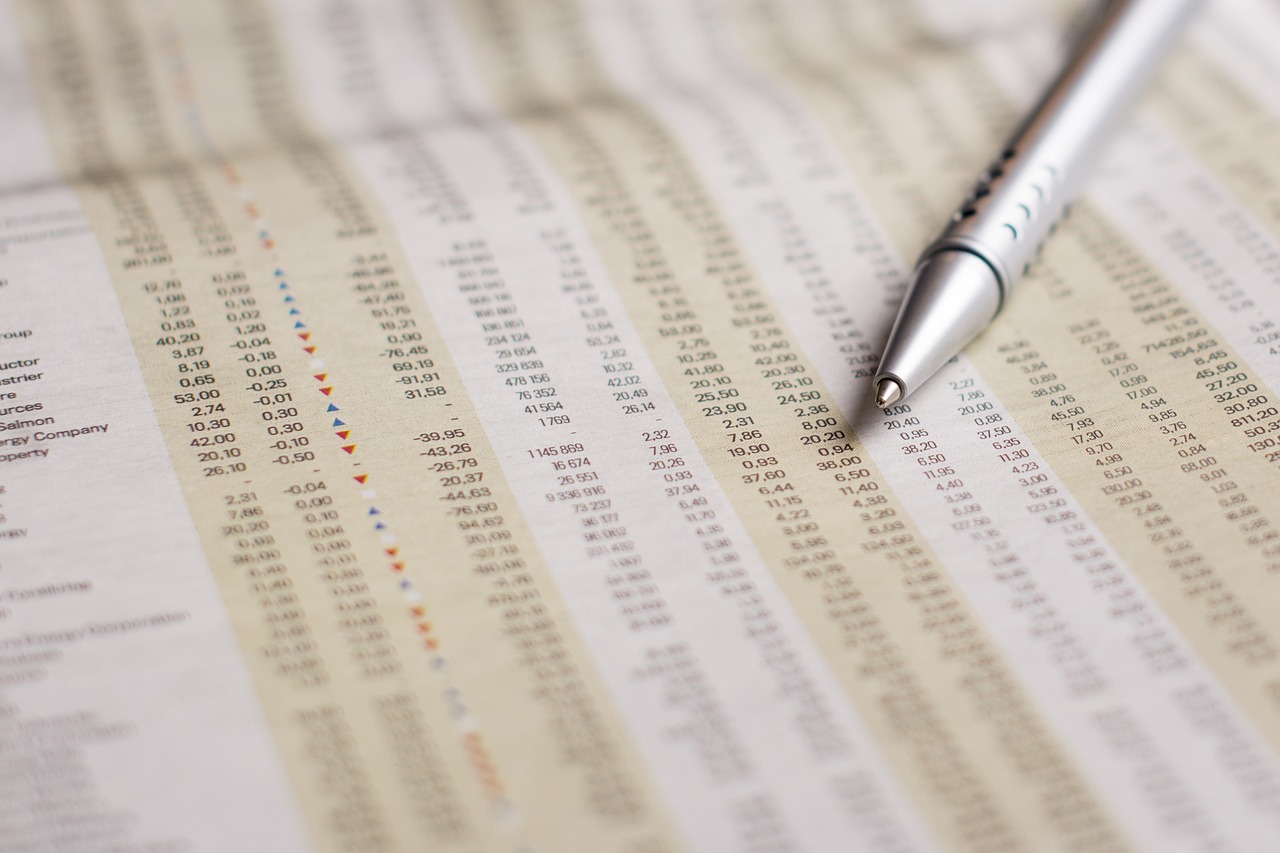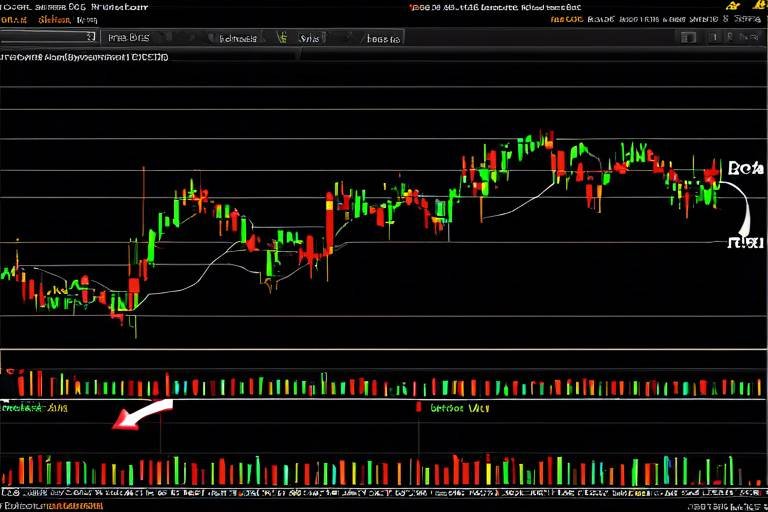How to Spot Market Manipulation
In the complex world of investing, one of the most critical skills you can develop is the ability to spot market manipulation. This skill not only protects your investments but also enhances your overall market knowledge. Market manipulation can take many forms, and being able to recognize the signs can save you from significant financial losses. So, how do you differentiate between genuine market movements and those that are artificially induced? Let's dive into the nuances of market manipulation and arm you with the knowledge you need to navigate these treacherous waters.
Market manipulation is essentially a set of deceptive practices aimed at distorting the prices of assets to create misleading appearances. These tactics can seriously undermine the integrity of the market, leading to a loss of trust among investors. When the market is manipulated, it can create a false sense of security or urgency, prompting investors to make hasty decisions based on incomplete or misleading information.
Understanding the various forms of market manipulation is crucial for any investor. Some common tactics include pump and dump schemes, where the price of a stock is artificially inflated through false information, and then the manipulators sell off their shares at a profit. Another tactic is spoofing, where traders place fake orders to create the illusion of demand, thus misleading other investors. Each of these tactics has its own set of warning signs, which we will explore in detail.
By familiarizing yourself with the indicators of market manipulation, you can make more informed decisions and protect your investments. Remember, the key to successful investing lies not just in picking the right stocks, but also in understanding the market dynamics at play. So, keep your eyes peeled for unusual trading patterns, and don't hesitate to do your research before making any investment moves!
- What is market manipulation? Market manipulation involves deceptive practices that distort the prices of assets, often leading to financial losses for unsuspecting investors.
- How can I recognize market manipulation? Look for warning signs such as unusual trading volume, extreme price volatility, and sudden spikes in stock prices.
- What are pump and dump schemes? These schemes involve artificially inflating a stock's price through false information, allowing manipulators to sell off their shares at a profit.
- Is it possible to protect myself from market manipulation? Yes, conducting thorough research and utilizing technical analysis can help you identify potential manipulation and safeguard your investments.

Understanding Market Manipulation
Market manipulation refers to a variety of deceptive practices that are designed to distort the prices of financial assets. These practices can undermine the integrity of the financial markets, leading to a lack of trust among investors and potentially devastating financial consequences for those who fall victim to them. It’s like a magician performing a trick; while the audience is captivated, they miss the sleight of hand happening right under their noses. In the world of trading, this sleight of hand can manifest in various forms, each with its own set of tactics and implications.
At its core, market manipulation can take several shapes, including but not limited to pump and dump schemes, spoofing, and wash trading. Each of these tactics exploits the psychology of investors, often leading them to make decisions based on false information or perceptions. For instance, a pump and dump scheme may lure investors in with the promise of quick profits, only to leave them holding the bag when the manipulators pull out. This not only results in significant financial losses for individual investors but can also create a ripple effect that damages the overall market.
Let’s break down some of the common forms of manipulation:
- Pump and Dump: This involves artificially inflating the price of a stock through misleading information and then selling off shares at the inflated price.
- Spoofing: This tactic entails placing fake buy or sell orders to create a false sense of market demand or supply, influencing price movements.
- Wash Trading: In this scenario, manipulators buy and sell the same asset simultaneously to create an illusion of high trading volume and activity.
These manipulative practices can lead to volatile markets where prices do not reflect the true value of assets. Investors may find themselves making decisions based on distorted data, leading to a cycle of fear and greed that can further exacerbate market instability. Understanding the intricacies of market manipulation is crucial for any investor looking to navigate the financial landscape effectively.
As we dive deeper into the various tactics employed by market manipulators, it becomes clear that awareness is the first step towards protection. By recognizing the signs of manipulation, investors can better equip themselves to avoid the pitfalls that come with these deceptive practices. The next sections will explore some of the common tactics used in manipulation, providing insights into how they operate and what investors can do to safeguard their investments.

Common Tactics Used in Manipulation
Market manipulation is a sneaky game played by some investors who are looking to profit at the expense of others. They employ various tactics that can distort the true value of assets and create an illusion of market activity. Understanding these tactics is crucial for any investor who wants to navigate the stock market safely. Among the most notorious methods are pump and dump schemes, spoofing, and wash trading. Each of these tactics has its unique characteristics and can significantly impact market dynamics.
One of the most infamous tactics is the pump and dump scheme. This involves artificially inflating the price of a stock by spreading false or misleading information. Once the price has been pumped up, the manipulators sell off their shares at a profit, leaving unsuspecting investors holding the bag when the price crashes back down. It’s like a magician pulling a rabbit out of a hat, except the rabbit is your hard-earned money!
Another common tactic is spoofing. This involves placing large orders for a stock, only to cancel them before execution. The goal here is to create a false sense of demand, tricking other investors into buying the stock at inflated prices. It’s akin to a mirage in the desert—looks real until you get closer. Spoofing can lead to significant price swings and can confuse even seasoned investors.
Then there’s wash trading, where a trader buys and sells the same asset simultaneously to create the illusion of high trading volume. This can mislead other investors into believing that a stock is more popular than it really is. It’s like a fake applause track in a sitcom—sounds great, but there’s no real audience behind it!
Each of these tactics can create a ripple effect in the market, leading to broader implications for investor confidence and market integrity. It’s essential for investors to be aware of these manipulative strategies and to remain vigilant. By understanding these common tactics, you can better protect yourself from falling victim to market manipulation.

Pump and Dump Schemes
Pump and dump schemes are one of the most notorious tactics used by market manipulators. Imagine a group of individuals who get together to inflate the price of a stock by spreading false information about it. They create a buzz, making it seem like this stock is the next big thing, causing unsuspecting investors to jump on the bandwagon. Once the price has been artificially inflated, these manipulators sell off their shares at a profit, leaving the new investors holding the bag when the stock crashes back down to its true value. This practice not only harms individual investors but also undermines the overall integrity of the market.
In essence, a pump and dump scheme can be likened to a mirage in the desert. It looks enticing and promising from a distance, but as you get closer, you realize it’s nothing more than an illusion. The manipulators often use social media, online forums, and even press releases to spread their exaggerated claims, making it crucial for investors to remain vigilant. Recognizing the signs of such schemes can be the difference between financial gain and significant loss.
To better understand how pump and dump schemes operate, consider the following table that outlines the typical stages involved:
| Stage | Description |
|---|---|
| 1. Promotion | Manipulators spread hype about a stock through various channels, often using misleading information. |
| 2. Price Increase | As more investors buy into the hype, the stock price rises significantly. |
| 3. Dumping | Once the price peaks, manipulators sell their shares for profit, causing the price to plummet. |
| 4. Aftermath | New investors are left with devalued stocks, leading to substantial financial losses. |
Understanding the signals of a pump and dump scheme is essential for any investor. Some common indicators include sudden spikes in stock prices accompanied by a surge in trading volume. If you notice a stock's price skyrocketing without any substantial news or fundamental changes, it might be time to dig deeper. Additionally, be wary of stocks that are heavily promoted on social media or penny stock forums, as these are often the breeding grounds for such schemes.
In conclusion, pump and dump schemes can wreak havoc on unsuspecting investors. By staying informed and vigilant, you can better protect yourself from falling victim to these manipulative tactics. Remember, if something seems too good to be true, it probably is!
- What is a pump and dump scheme? A pump and dump scheme is a type of securities fraud where the price of a stock is artificially inflated through false or misleading statements, allowing manipulators to sell at a profit.
- How can I identify a pump and dump scheme? Look for sudden price spikes, increased trading volume without news, and heavy promotion on social media or forums.
- What should I do if I suspect a pump and dump? Conduct thorough research on the stock, and consider consulting with a financial advisor before making any investment decisions.

Identifying Pump and Dump Signals
When it comes to spotting pump and dump schemes, being able to identify the right signals is absolutely crucial. These schemes can often seem like a mirage, promising quick profits only to leave you stranded in a desert of losses. So, how do you differentiate between legitimate trading activity and manipulative tactics? Here are some key signals to watch for:
First off, keep an eye on sudden price spikes. If a stock's price jumps dramatically in a very short period, especially without any fundamental news or earnings reports to justify the increase, it could be a red flag. This spike often attracts unsuspecting investors, lured by the fear of missing out (FOMO). Additionally, an increase in trading volume that coincides with these price spikes can further indicate manipulative activity. When you see volume soar, it’s like a siren song; it can be enticing, but you need to be cautious.
Another important signal is the presence of hype on social media and forums. Manipulators often use platforms like Twitter, Reddit, or specialized trading forums to spread false narratives about a stock. If you notice a stock being discussed excessively, especially with overly optimistic projections, take a step back. Ask yourself: Is this chatter based on solid information or just hot air? A good rule of thumb is to trust your instincts and do your own research before jumping on the bandwagon.
Moreover, be wary of unusual patterns in trading activity. For instance, if you see a stock that has been relatively stable suddenly experience wild fluctuations, it might be worth investigating. A classic sign of a pump and dump is a stock that has been dormant for a while, suddenly experiencing a surge in activity followed by a rapid decline. This can be likened to a roller coaster ride—exciting at first, but you might end up feeling queasy once the ride is over.
In addition, consider the overall market sentiment. If the broader market is bearish and a particular stock is soaring despite negative trends, it could be a sign of manipulation. Always analyze the bigger picture; if something seems off, it probably is. To put it simply, if a stock is swimming against the current, it might be time to ask why.
Finally, look out for company announcements that seem too good to be true. Often, manipulators will use press releases or news articles to create a false narrative about a company’s performance or potential. If you see a press release that seems overly optimistic without any substantial backing, it’s time to dig deeper. Remember, in the world of investing, if something sounds too good to be true, it probably is.
In summary, identifying pump and dump signals requires a keen eye and a bit of skepticism. By being vigilant and understanding these key indicators, you can better protect yourself from falling victim to these deceptive practices. Always remember, when it comes to investing, knowledge is your best defense.
- What is a pump and dump scheme? A pump and dump scheme is a fraudulent practice where the price of a stock is artificially inflated through false or misleading statements, allowing the manipulators to sell at a profit before the price collapses.
- How can I protect myself from market manipulation? Conduct thorough research, analyze trading volumes and price fluctuations, and be wary of hype from social media or forums.
- Are there legal consequences for pump and dump schemes? Yes, individuals involved in pump and dump schemes can face severe legal penalties, including fines and imprisonment.

Consequences of Pump and Dump
When it comes to the consequences of pump and dump schemes, the fallout can be devastating—not just for the victims, but for the market as a whole. Imagine a beautiful house built on a shaky foundation; that's what a market rife with manipulation looks like. Investors who fall prey to these schemes often experience significant financial losses, leading to a ripple effect that undermines overall market trust.
One of the most immediate impacts of a pump and dump scheme is the financial harm inflicted on unsuspecting investors. These individuals, often lured in by the promise of quick profits and glowing reports, find themselves holding worthless stocks after the manipulators sell off their shares. The sudden drop in stock price can leave these investors with losses that can reach staggering amounts. For example, if a stock was artificially inflated from $10 to $50, and an investor bought in at the peak, they could end up losing 80% of their investment when the price plummets back to its original level.
Moreover, the consequences extend beyond individual losses. The broader market integrity is compromised, which can lead to a decline in investor confidence. When people lose faith in the fairness of the market, they may withdraw their investments, leading to decreased liquidity and volatility. This erosion of trust can have long-lasting effects, as potential investors may hesitate to enter the market again, fearing that they might be the next victim of manipulation.
Another significant consequence is the potential for regulatory backlash. Authorities like the Securities and Exchange Commission (SEC) often ramp up their scrutiny and enforcement actions in response to increased manipulation cases. This could lead to stricter regulations that, while necessary to protect investors, could also stifle legitimate trading activities and innovation in the market. In essence, the actions of a few can lead to a tightening of the rules for everyone.
In summary, the consequences of pump and dump schemes are far-reaching. They not only impact individual investors but also threaten the integrity of financial markets as a whole. By recognizing these schemes and understanding their implications, investors can better protect themselves and contribute to a healthier market environment.
- What is a pump and dump scheme? A pump and dump scheme is a form of securities fraud that involves artificially inflating the price of a stock through false or misleading statements, only to sell off at a profit.
- How can I identify a pump and dump scheme? Look for sudden price spikes, increased trading volume, and overly optimistic news releases that lack credible sources.
- What should I do if I suspect manipulation? Conduct thorough research, consult with financial advisors, and report suspicious activities to regulatory authorities.
- Are there legal consequences for perpetrators of pump and dump schemes? Yes, individuals involved in such schemes can face severe legal penalties, including fines and imprisonment.

Spoofing and Layering
Spoofing and layering are two deceptive tactics that manipulative traders use to create an illusion of market activity and influence prices. At first glance, these terms may sound technical, but understanding them is crucial for any investor looking to protect their interests in the financial markets. Spoofing involves placing large orders to buy or sell an asset with no intention of executing those orders. The goal is to create a false sense of demand or supply, which can artificially inflate or deflate the price of the asset. For instance, imagine a trader who places a large order to buy shares of a company. Other traders, seeing this significant demand, might rush to purchase the stock, driving the price up. However, before these orders are executed, the manipulator cancels their original order, leaving the unsuspecting buyers holding an overvalued asset.
On the other hand, layering is a more nuanced form of spoofing. It involves placing multiple small orders at various price levels to give the impression of a robust market for a particular asset. These orders create a façade of demand or supply, tricking other traders into making decisions based on this misleading information. For example, a trader might place several buy orders at different price points to create the illusion of increasing demand. Once the price rises due to this artificial activity, the trader can sell their actual holdings at a profit. The manipulative nature of these tactics not only affects the price of the asset in question but can also lead to broader market instability.
Detecting spoofing and layering can be challenging, but there are several indicators that investors can watch for. Here are a few key signs:
- Sudden Order Changes: If you notice a large order being placed and then quickly canceled, it might be a sign of spoofing.
- Unusual Price Movements: Prices that spike or drop suddenly without any fundamental news can indicate manipulation.
- Order Book Activity: Monitoring the order book for unusual patterns can help identify layering tactics.
While these tactics can be difficult to spot, regulatory bodies like the Securities and Exchange Commission (SEC) are increasingly vigilant about market manipulation. As an investor, it’s essential to remain informed and cautious. Always conduct thorough research and consider using tools that provide insights into trading volumes and market trends. By doing so, you can better navigate the complexities of the market and safeguard your investments against these deceptive practices.
What is the difference between spoofing and layering?
Spoofing involves placing large orders to create a false impression of demand, while layering consists of placing multiple smaller orders at different price levels to mislead other traders about market activity.
How can I protect myself from market manipulation?
Conducting thorough research, utilizing technical analysis, and staying informed about market trends are effective strategies to safeguard your investments.
Are there regulations against spoofing and layering?
Yes, regulatory bodies like the SEC have established rules to prevent these manipulative practices, and violators can face significant penalties.

Recognizing Warning Signs
In the world of investing, being able to recognize warning signs of market manipulation can mean the difference between making a profit and incurring significant losses. It's not just about numbers; it's about reading the market's pulse and understanding its rhythm. Investors should be on the lookout for specific indicators that might suggest something fishy is going on. One of the most telling signs is unusual trading volume. If you notice a sudden spike in the amount of shares being traded, it could indicate that something is amiss. This spike often precedes a major price movement, which could be the result of manipulation rather than genuine market interest.
Another critical indicator to watch for is price volatility. If a stock's price is swinging dramatically in a short period, this could be a sign of manipulation. Extreme fluctuations can create a false sense of demand or supply, enticing unsuspecting investors into making hasty decisions. For instance, if you see a stock that usually trades steadily suddenly jumping up and down like a yo-yo, it’s time to take a step back and analyze what’s really happening.
It's essential to consider the context of these warning signs. An unusual spike in volume or volatility might coincide with news events, earnings reports, or broader market trends. Therefore, it's crucial to combine these observations with thorough research. Understanding the company’s fundamentals can help provide clarity amidst the chaos. For example, if a company releases a new product that’s generating buzz, a spike in volume might be legitimate. However, if the increase occurs without any news or rational explanation, it’s a red flag.
Additionally, social media sentiment can also play a significant role in market manipulation. Manipulators often exploit platforms like Twitter or Reddit to spread false information and create hype. If you see a sudden influx of posts about a stock, especially with exaggerated claims, it’s worth investigating. Trust your instincts and combine this information with other indicators to assess whether the excitement is warranted or just a smoke screen.
To summarize, here are some key warning signs to keep an eye on:
- Unusual Trading Volume: Sudden spikes can indicate manipulation.
- Extreme Price Volatility: Rapid price changes may suggest market manipulation.
- Contextual Awareness: Always consider news and events surrounding the stock.
- Social Media Buzz: Be cautious of hype driven by false information.
By being vigilant and aware of these warning signs, investors can better protect themselves from falling victim to manipulation tactics. Remember, the market is not just a place for numbers; it’s a complex ecosystem where knowledge and caution can lead to more informed and profitable decisions.
- What is market manipulation? Market manipulation refers to deceptive practices that distort the prices of assets, often leading to unfair trading advantages.
- How can I identify a pump and dump scheme? Look for sudden price spikes accompanied by increased trading volume and social media hype without any substantial news.
- What should I do if I suspect manipulation? Conduct thorough research, consult with financial advisors, and consider diversifying your investments to mitigate risks.
- Are there legal consequences for market manipulation? Yes, market manipulation is illegal and can lead to severe penalties for those involved.

Unusual Trading Volume
When it comes to spotting potential market manipulation, is one of the most telling signs. Imagine you're watching a movie where suddenly, the background noise escalates, drawing your attention away from the plot. In the stock market, a sudden spike in trading volume can be just as alarming, signaling that something unusual is happening beneath the surface. But what does it mean when you see a stock's trading volume shoot up unexpectedly? It could indicate that manipulators are at work, trying to create a false narrative around a particular asset.
To understand this better, let's break down what constitutes "unusual" trading volume. Typically, a stock will have a consistent volume range based on its historical data. When the trading volume exceeds this range significantly, it can be a red flag. For example, if a stock usually trades around 10,000 shares a day, but suddenly spikes to 100,000 shares, you should be asking yourself, why the sudden interest? This kind of volume surge can often be linked to manipulative tactics, such as pump and dump schemes, where the price is artificially inflated by misleading information.
So how can you effectively analyze trading volume? Here are a few strategies:
- Compare with Historical Data: Look at the average trading volume over a specific period (like the past 30 days). A significant deviation from this average can indicate manipulation.
- Monitor News and Events: Sometimes, an increase in volume might be justified by genuine news or events, such as earnings reports or product launches. Always cross-reference volume spikes with news releases.
- Use Volume Indicators: Technical analysis tools, such as the On-Balance Volume (OBV) or Chaikin Money Flow (CMF), can help you understand whether the volume is supporting a price trend or not.
It's also essential to recognize that not all spikes in trading volume are nefarious. Sometimes, they can be the result of legitimate interest in a stock, perhaps due to positive news or market trends. However, being vigilant about unusual trading volumes can help you navigate potential pitfalls. It’s like having a radar that alerts you when something fishy is going on in the market.
In conclusion, keeping an eye on trading volume is crucial for any investor looking to protect themselves from market manipulation. By understanding what constitutes unusual trading volume and employing analytical strategies, you can make more informed decisions and avoid falling victim to deceptive practices.
Q: What does unusual trading volume indicate?
A: Unusual trading volume can indicate potential market manipulation, as it often reflects sudden interest in a stock that may not be justified by underlying fundamentals.
Q: How can I analyze trading volume effectively?
A: You can analyze trading volume by comparing it with historical data, monitoring relevant news and events, and using technical indicators to assess market trends.
Q: Are all spikes in trading volume a sign of manipulation?
A: Not necessarily. While many spikes can indicate manipulation, they can also result from legitimate market interest due to positive news or events.

Price Volatility Patterns
Price volatility patterns can be a telltale sign of market manipulation, and understanding them is crucial for investors looking to safeguard their assets. Volatility refers to the degree of variation in trading prices over time, and when it spikes unexpectedly, it can indicate underlying issues or manipulative tactics at play. For instance, if you notice a stock that usually trades steadily suddenly experiencing wild price swings, it’s time to raise your eyebrows and dig deeper.
To illustrate, let’s consider a scenario where a stock typically hovers around $50. If, out of nowhere, the price jumps to $75 and then plummets back to $45 within a week, this erratic behavior could be a red flag. Such rapid fluctuations often attract attention, and manipulators might exploit this volatility to create a false sense of urgency among investors. This is akin to a magician performing a trick—while your eyes are focused on the dazzling movement, you might miss the sleight of hand happening right before you.
One of the common patterns associated with price volatility is the “V-shaped recovery,” where prices drop sharply and then rebound just as quickly. This pattern can be enticing, drawing in unsuspecting investors who believe they are seizing a golden opportunity. However, it’s essential to remain skeptical and analyze the volume accompanying these movements. If the price surge is accompanied by unusually high trading volume, it might suggest that something manipulative is afoot rather than a genuine market correction.
Another critical aspect to consider is the relationship between volatility and news events. When unexpected news breaks—be it positive or negative—stocks can react dramatically. However, if you observe that a stock consistently experiences volatility in the absence of significant news, this could be indicative of manipulation. For example, a stock that sees erratic price changes following minor news releases could be a target for traders looking to capitalize on fear and uncertainty.
To help investors identify and understand these volatility patterns more effectively, here’s a simple breakdown of key indicators to watch for:
| Indicator | Description |
|---|---|
| Sudden Price Spikes | Unexplained increases in price over a short period. |
| High Trading Volume | Significant increases in the number of shares traded, often preceding or following price changes. |
| Frequent Reversals | Quick shifts in price direction that are not based on fundamental changes. |
| Absence of News | Volatility occurring without any substantial news or events to justify the price movements. |
As an investor, keeping an eye on these indicators can help you navigate the often-turbulent waters of the stock market. Remember, just as a seasoned sailor reads the wind and waves, you too must learn to interpret the signs of volatility. By doing so, you can better position yourself to avoid the pitfalls of manipulative tactics and make more informed investment decisions.

Protecting Yourself from Manipulation
In today's fast-paced trading environment, protecting yourself from market manipulation is more crucial than ever. With the rise of digital trading platforms and the accessibility of information, investors must be vigilant and proactive. So, how can you safeguard your investments? Let's dive into some effective strategies that can help you navigate the murky waters of market manipulation.
First and foremost, conducting thorough research is essential. Before investing in any asset, take the time to understand the company's fundamentals. This means looking beyond just the stock price and diving into financial statements, earnings reports, and industry trends. By developing a solid understanding of the company you're investing in, you can better identify any red flags that may indicate manipulation. For example, if a company's stock price is soaring while its earnings are stagnant, it may be a sign that something is amiss.
In addition to fundamental analysis, utilizing technical analysis can provide valuable insights into market trends and anomalies. By examining price charts and indicators, you can spot unusual patterns that may suggest manipulation. For instance, if you notice a sudden spike in trading volume accompanied by extreme price movements, it could indicate that manipulators are at play. Tools like moving averages, Relative Strength Index (RSI), and Bollinger Bands can help you identify these anomalies and make more informed decisions.
Moreover, staying informed about market news and trends is vital. By keeping your finger on the pulse of the market, you can better anticipate potential manipulation. Follow reputable financial news sources, join investment forums, and engage with other investors to share information and insights. Knowledge is power, and being aware of the latest developments can help you spot manipulation before it affects your investments.
Another effective strategy is to diversify your portfolio. By spreading your investments across various assets, you can reduce the risk of significant losses due to manipulation in any single asset. Diversification acts as a buffer, allowing you to weather market fluctuations without being overly exposed to any one investment. Consider including a mix of stocks, bonds, and alternative assets to create a well-rounded portfolio.
Lastly, practice emotional discipline. One of the biggest challenges investors face is allowing emotions to dictate their decisions. Market manipulation often preys on fear and greed, causing investors to make impulsive choices. By sticking to your investment strategy and maintaining a level head, you can avoid falling victim to manipulative tactics. Remember, investing is a marathon, not a sprint. Patience and discipline are key to long-term success.
- What is market manipulation? Market manipulation refers to deceptive practices that distort the prices of assets, affecting market integrity.
- How can I identify signs of market manipulation? Look for unusual trading volume, extreme price volatility, and sudden changes in stock price without corresponding news.
- What are pump and dump schemes? These schemes involve inflating a stock's price through false information, allowing manipulators to profit by selling at the inflated price.
- How can I protect myself from manipulation? Conduct thorough research, utilize technical analysis, stay informed, diversify your portfolio, and practice emotional discipline.

Conducting Thorough Research
When it comes to investing, conducting thorough research is not just a good practice; it’s a **vital armor** against the unpredictable tides of market manipulation. Think of it as a detective's magnifying glass, allowing you to scrutinize every detail of a company before you commit your hard-earned cash. In today's fast-paced trading environment, where information can be misleading and motives can be obscured, having a robust research strategy can be your best defense.
Start by diving deep into a company's fundamentals. This includes examining its financial statements, understanding its business model, and analyzing its market position. Key metrics such as earnings per share (EPS), price-to-earnings (P/E) ratio, and debt-to-equity ratio should be front and center in your analysis. These numbers not only tell you how well a company is doing but also help you gauge whether its stock price is justified or inflated due to manipulation.
Moreover, it's essential to stay updated on news and trends that can affect the market. Utilize resources like financial news websites, social media platforms, and investment forums. However, be wary of sensationalism; not every headline reflects the true state of affairs. Cross-reference information from multiple sources to ensure accuracy. Remember, in the world of finance, **not all that glitters is gold**, and a well-informed investor is a powerful investor.
Another critical aspect of research is understanding the competitive landscape. Who are the company's main competitors? What are their strengths and weaknesses? By comparing these factors, you can better assess the company's potential for growth and the sustainability of its stock price. This comparative analysis can reveal if a stock is genuinely undervalued or if it’s just a target for manipulation.
Finally, don't overlook the importance of sentiment analysis. Tools like social media sentiment trackers can provide insights into how the public perceives a stock. If there’s a sudden surge in positive chatter about a stock, it could be a sign of a potential pump and dump scheme. Conversely, a wave of negative sentiment might indicate underlying issues that could lead to volatility. By keeping your finger on the pulse of market sentiment, you can make more informed decisions and avoid falling victim to manipulative tactics.
In summary, conducting thorough research is about piecing together a puzzle. By examining financials, staying informed, analyzing competitors, and gauging market sentiment, you can develop a clearer picture of a company's value. This diligence not only protects your investments but also empowers you to navigate the often murky waters of the stock market with confidence.
- What is market manipulation?
Market manipulation refers to deceptive practices that distort the prices of assets, often leading to unfair trading advantages. - How can I identify pump and dump schemes?
Look for sudden price spikes, increased trading volume, and overly positive news that may not be backed by fundamentals. - What should I do if I suspect market manipulation?
Conduct thorough research, report any suspicious activity to regulatory authorities, and consider avoiding investments in that asset. - Is technical analysis useful for spotting manipulation?
Yes, technical analysis can help reveal unusual trading patterns and price movements that may indicate manipulation.

Utilizing Technical Analysis
When it comes to navigating the tumultuous waters of the stock market, technical analysis is like your trusty compass. It allows investors to make sense of price movements and trading volumes, which can be crucial in identifying potential market manipulation. By examining historical price charts and utilizing various indicators, you can gain insights into market trends that may not be immediately apparent. Think of it as reading the market's pulse, helping you to determine whether the fluctuations you're witnessing are organic or the result of some dubious manipulation tactics.
At its core, technical analysis relies on the idea that all known information is reflected in the stock price. Therefore, by studying price patterns and trading volumes, you can make educated guesses about future price movements. For example, if you notice a stock that has been showing consistent upward movement suddenly experiencing a spike in volume, it could be a sign of a pump and dump scheme. To illustrate this, consider the following table that outlines common technical indicators and what they can signify:
| Indicator | What It Indicates |
|---|---|
| Moving Averages | Help identify trends over time; a crossover could indicate a change in direction. |
| Relative Strength Index (RSI) | Measures the speed and change of price movements; can indicate overbought or oversold conditions. |
| Volume Oscillator | Shows the difference between two volume moving averages; can indicate strength or weakness in a trend. |
| Bollinger Bands | Indicates volatility; prices moving outside the bands can signal potential reversals. |
Furthermore, the use of chart patterns can be incredibly revealing. Patterns like head and shoulders, double tops, and flags can signal potential reversals or continuations in price trends. Recognizing these can help you determine whether a stock is being manipulated or if it is simply following its natural trend. For instance, a sudden formation of a head and shoulders pattern after a prolonged uptrend could indicate that the stock is due for a correction, which might be orchestrated by manipulators looking to cash in.
Another useful aspect of technical analysis is the ability to set stop-loss orders. By placing these orders at strategic points, you can protect yourself from significant losses that may occur due to sudden price drops often associated with manipulation. This proactive approach can give you peace of mind, knowing that you've taken steps to safeguard your investment.
However, it’s essential to remember that while technical analysis can provide valuable insights, it should not be used in isolation. Combining technical analysis with fundamental analysis—such as understanding a company's financial health and market position—will give you a more comprehensive view of the investment landscape. This holistic approach can help you make informed decisions and avoid falling victim to manipulative tactics.
In conclusion, utilizing technical analysis is a powerful tool for investors looking to protect themselves from market manipulation. By understanding the various indicators and patterns, you can navigate the market more effectively, making decisions that are informed and strategic. So, the next time you find yourself analyzing a stock, remember to keep your technical analysis skills sharp; they may just save you from a costly mistake.
- What is technical analysis? Technical analysis is the study of past market data, primarily price and volume, to forecast future price movements.
- How can I use technical analysis to identify market manipulation? Look for unusual price patterns, spikes in volume, and specific chart formations that may indicate manipulation.
- Is technical analysis better than fundamental analysis? Both analyses have their merits; combining them offers a more rounded perspective on investments.
- What tools can I use for technical analysis? Many online platforms provide charting tools, indicators, and technical analysis software to assist investors.
Frequently Asked Questions
- What is market manipulation?
Market manipulation refers to deceptive practices that intentionally distort the prices of assets, often leading to unfair advantages for certain traders. This can undermine the integrity of the market and affect the trust of investors.
- What are some common tactics used in market manipulation?
Common tactics include pump and dump schemes, spoofing, and wash trading. Each of these methods can create artificial price movements that mislead investors and distort market dynamics.
- How can I identify a pump and dump scheme?
Look for sudden price spikes accompanied by increased trading volume and hype on social media or forums. These are often red flags indicating that a stock may be experiencing a pump and dump.
- What are the consequences of falling victim to a pump and dump?
Victims can face significant financial losses, as they may buy into inflated prices only to see the stock crash once the manipulators sell off their shares. This can also lead to a broader loss of trust in the market.
- What is spoofing and how does it work?
Spoofing involves placing fake orders to create a misleading appearance of demand or supply, which can manipulate prices. Once the price moves in the desired direction, the spoofer cancels the orders and profits from the change.
- How can I recognize unusual trading volume?
Unusual trading volume is typically characterized by a sudden spike compared to average volume levels. Monitoring volume trends can help you identify potential manipulation before it impacts your investments.
- What role does price volatility play in market manipulation?
Extreme price fluctuations can indicate manipulation, as they often result from artificial influences rather than genuine market activity. Understanding these patterns can help you make more informed investment decisions.
- What steps can I take to protect myself from market manipulation?
Conduct thorough research on companies and their fundamentals, and utilize technical analysis to spot trends and anomalies. Staying informed and vigilant can significantly reduce your risk of falling victim to manipulation.
- Is technical analysis useful in identifying market manipulation?
Yes, technical analysis can provide insights into market trends and highlight unusual price movements that may indicate manipulation. Using various technical indicators can enhance your ability to detect potential issues.



















